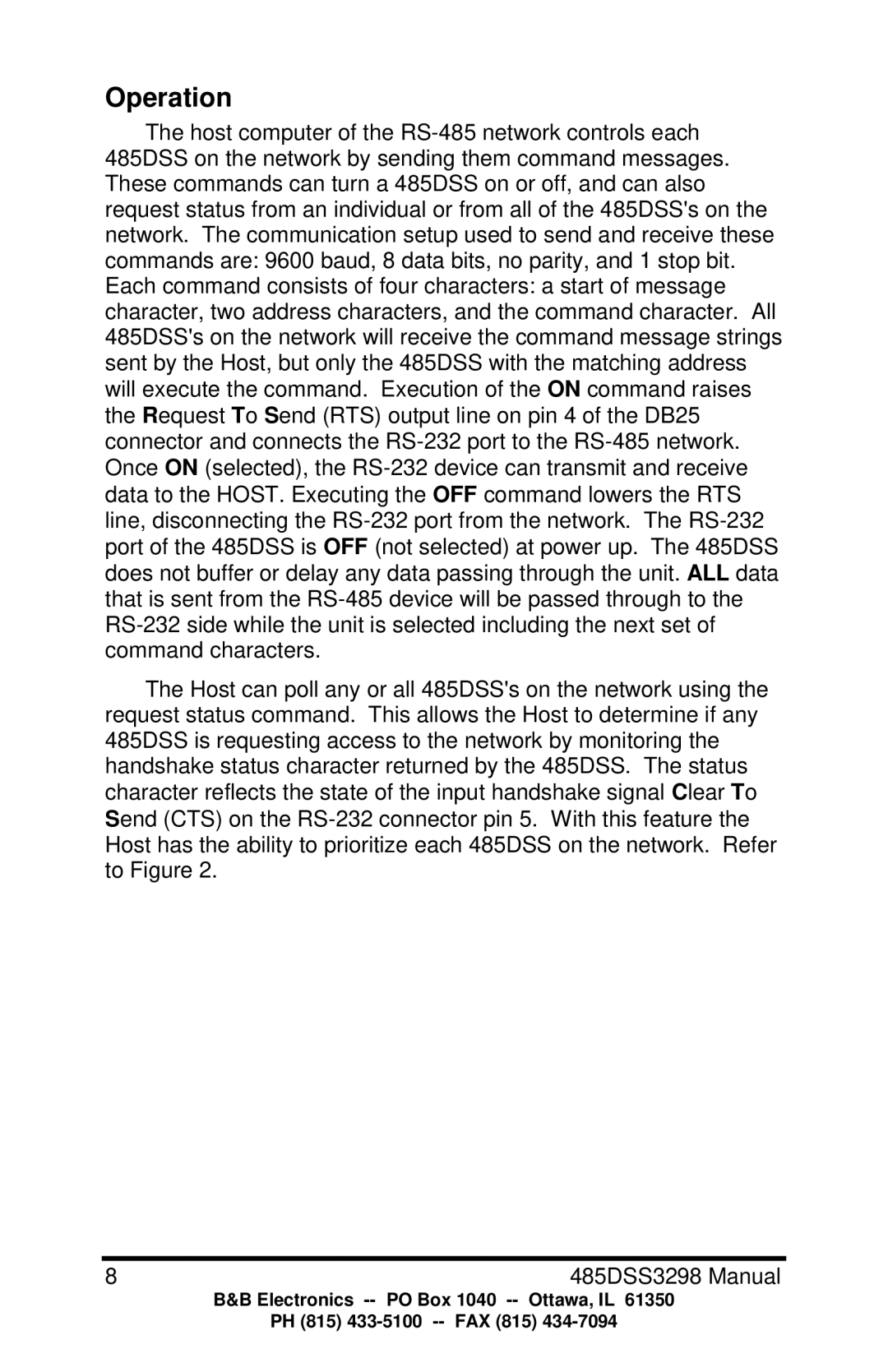
Operation
The host computer of the RS-485 network controls each 485DSS on the network by sending them command messages. These commands can turn a 485DSS on or off, and can also request status from an individual or from all of the 485DSS's on the network. The communication setup used to send and receive these commands are: 9600 baud, 8 data bits, no parity, and 1 stop bit. Each command consists of four characters: a start of message character, two address characters, and the command character. All 485DSS's on the network will receive the command message strings sent by the Host, but only the 485DSS with the matching address will execute the command. Execution of the ON command raises the Request To Send (RTS) output line on pin 4 of the DB25 connector and connects the RS-232 port to the RS-485 network. Once ON (selected), the RS-232 device can transmit and receive data to the HOST. Executing the OFF command lowers the RTS line, disconnecting the RS-232 port from the network. The RS-232 port of the 485DSS is OFF (not selected) at power up. The 485DSS does not buffer or delay any data passing through the unit. ALL data that is sent from the RS-485 device will be passed through to the RS-232 side while the unit is selected including the next set of command characters.
The Host can poll any or all 485DSS's onthe network using the request status command. This allows the Host to determine if any 485DSS is requesting access to the network by monitoring the handshake status character returned by the 485DSS. The status character reflects the state of the input handshake signal Clear To Send (CTS) on the RS-232 connector pin 5. With this feature the Host has the ability to prioritize each 485DSS on the network. Refer to Figure 2.
B&B Electronics -- PO Box 1040 -- Ottawa, IL 61350
PH (815) 433-5100 -- FAX (815) 434-7094
